Secular Curriculum Review: IEW’s Student Writing Intensive
IEW’s Student Writing Intensive is a practical, step-by-step writing curriculum that works great for kids who think they hate writing.
IEW’s Student Writing Intensive is a practical, step-by-step writing curriculum that works great for kids who think they hate writing.
When my husband and I decided to homeschool our children, I thought writing would be a cinch to teach. I still think it would be, if I had a kid who was like me when I was a child — a child who was always writing. Growing up, I wanted to write poetry, stories, novels, you name it. And I never balked at a writing assignment.
Many people say that the secret to getting kids to write is to let them write whatever they want, and you can even take dictation for them, if you want. I think that’s good advice for a lot of kids, but my son is different. He doesn’t have any interest in writing anything. If I told him to write whatever he wanted, that would cause him anxiety and not make writing fun.
For a long time I wondered how I could teach him good writing skills without making him hate writing. This is something that I’ll be thinking about every year — how to move forward in a way that’s right for him. Fortunately, this year, I found something to get started with that’s working well. It’s the Institute for Excellence in Writing’s Student Writing Intensive Level A, which is for 3rd-5th graders. Levels B and C are available for higher grades. (Note that you can pair this with their Teaching Writing: Structure and Style, which is a 14-hour DVD Seminar for teachers and much more comprehensive. However, for the sake of this review, I’m writing about the Writing Intensive as a stand-alone curriculum.)
I’ll tell you right up front that I would not recommend this curriculum, if you have a child who enjoys writing. While all kids might benefit and learn something from it, I think it is especially made for kids who don’t have any idea what to write about or how to get started. I’m about halfway through the curriculum with my son right now.
It comes with a set of DVDs, and your child can watch the videos as if he’s sitting there in the classroom, listening to the teacher explain the concepts to a group of students. It begins by teaching students how to create a keyword outline for a paragraph that’s included in the lesson. Basically, he has to pick the three most important words in each sentence. Next, using this outline, he’ll write his own paragraph without looking at the original one. This has taken away the angst of “what am I supposed to write?” that was the first hurdle my son needed to get over.
Subsequent lessons are similar. All the lessons provide a pre-written text to create an outline with, but they add in “dress-ups” that the student needs to include in their paragraphs. Some of the dress-ups include a who/which clause, a strong verb, quality adjective, a because clause, etc. It’s slowly building a toolbox of writing mechanics that will help a child make her writing more varied and interesting. After doing these exercises with short, non-fiction paragraphs, it moves on to longer short stories and teaches students how to write a Story Sequence Chart. I can see where after doing these exercises with pre-written texts and re-writing them in his own words, my son may gain confidence in his writing ability and this will later free him up to begin some of his own, original writing. So far, I’ve been happy with it.
However, I have a few, small issues with this curriculum. First of all, some of the paragraphs he’s been using at the beginning of this curriculum should be proofread a little more closely. I have found more than one poorly written sentence. I always tell my son what is wrong with it, but for a parent who doesn’t have strong writing skills, I see this could be a problem. I feel a writing curriculum should offer excellent writing examples, though I also tell my son that this gives him a chance to write the paragraph better.
I also have a problem with forcing the student to use one of each dress-up in their paragraph. While I see the benefit of repetition so that the student becomes more comfortable with the using these sentence structures, and I love how it reinforces grammar skills, forcing every dress-up does not always make the best writing, especially in a short paragraph.
I have dealt with this issue by explaining to my son the purpose of these exercises. I told him that his writing will sound better if he varies the length and type of his sentences. He should try his best to use the dress-ups, but if they don’t serve the writing by making it sound better, he doesn’t have to do it. I go over his work with him, and I make suggestions, if I see a way to do it, but I don’t make him, for example, include a who/which clause into his writing, if I feel what he wrote without one is good writing.
This Student Writing Intensive offers some tips for kids that have been great for my son as well. The first one is that he’s only allowed to write with a pen. This takes away the urge to stop and erase and make the writing perfect the first time. The rough draft does not need to be perfect, and he’s learning proofreading marks to make corrections. The other tip that this curriculum offers is that a parent should be a walking dictionary for the child, telling him how to spell any word he doesn’t know. This takes a lot of angst out of writing that first draft too.
Overall, I like how this curriculum is helping my son put words on paper in a way that is not making him hate writing. It is a very formal program, which doesn’t work for every child, but if you have a child who has no interest in putting words on paper and/or likes having a “toolbox” to work with, it might be worth looking at.
If you use one of the Student Writing Intensives, IEW also offers continuation courses. I’m not sure whether that will be the right next step for my son, however. We’ll see when we get there.
How to Celebrate the Winter Solstice in Your Homeschool
Celebrate the shortest day of the year by exploring the science of the seasons.
Celebrate the shortest day of the year by exploring the science of the seasons.
As part of a nature loving family, and with a child who loves science, I find the idea of celebrating the winter solstice appeals to me. What better way to honor the mystery and beauty of this earth than mark the changing of the seasons? The winter solstice marks the official beginning of winter. It is the day that the northern hemisphere has the shortest daylight hours, so the days following it get a little longer. Because of that, we can celebrate “the return of light.” I love that.
Last year I decided to try to institute what I hope will become a tradition in our house — celebrating the winter solstice. We also celebrate Christmas, so I didn’t want to make our solstice celebration something that would end up being a lot of extra work for me, and since at that time my boys didn't even know what the solstice was, I decided to use the occasion to teach them about it.
I discovered that there aren’t many books about the winter solstice that would appeal to my kids, but the one I did find was just right. I read The Shortest Day: Celebrating the Winter Solstice by Wendy Pfeffer to my seven-year-old. My younger son, who was four, lost interest in the book, but that was okay. We have many solstices ahead of us! (And I’ve already found a few new books to add to our list: The Return of the Light: Twelve Tales from Around the World for the Winter Solstice and The Shortest Day — Carson Ellis’s gorgeously illustrated version of Susan Cooper’s poem — are at the top of our list!)
The book did a good job of explaining how for thousands of years people all around the world have wondered about and celebrated the solstice. While the book does not get bogged down in details that young children might not care about, I wished there had been a few more details for my sake, but nevertheless, it was just fine for my seven-year-old.
For example, it tells about how ancient people became scared when the sun began to disappear and how they would hold long ceremonies to try to get their gods to bring the sun back, but it doesn't explain where or exactly when or where these people lived. It also tells of how some of the earliest astronomers measured the days and figured out which days would be the shortest and the longest, and it explains that many of our current customs stem from some of these old rituals held around the winter solstice. Illustrations help explain the story a little more.
The book has a good graphic showing the position of the earth at each solstice and equinox, and it has several suggestions for activities that you can do with your kids. I picked one where you use an orange and a lamp to demonstrate how the tilt of the earth stays the same as it travels around the sun. Only I used our globe and a lamp. This visual even helped me understand that as the North Pole tilts away from the sun, we have our winter and the Southern Hemisphere has its summer.
This coming winter solstice, I am hoping to add some more fun things to the day. Perhaps we will make peanut butter bagels dipped in birdseed and hang them in our trees to feed the birds. Maybe we’ll bake something special for us to eat as well. Maybe we’ll light some candles for a while. Or maybe we’ll go on another family hike that day.
I have also considered marking the summer solstice and the spring and fall equinox. But getting myself to remember to do one more thing when our calendar is already so busy is hard. This summer all I managed to do was to tell my boys that it was the summer solstice. When I told my four-year-old that it was the shortest night, he got excited. He thought that meant that he wouldn't have to sleep very long!
Creating new family traditions can be tricky sometimes, but I’m determined to at least celebrate the winter solstice, even if it ends up being something we do in a low-key, last-minute kind of way. Whatever ends up being our yearly solstice tradition, I hope it can be another way to inspire awe in my children for this earth, the universe and our abundant lives.
This column was originally published in the winter 2014 issue of HSL. (We’re Amazon affiliates, so if you purchase something through an Amazon link, we may receive a small percentage of the sale. Obviously this doesn’t influence what we recommend, and we link to places other than Amazon.)
The Lazy Homeschool Parent’s Guide to Holiday Cheer
It’s okay to scale way back if Pinterest-perfect holidays are making you stress more than you celebrate.
It’s okay to scale way back if Pinterest-perfect holidays are making you stress more than you celebrate.
Okay, let’s be clear: I’m not calling you lazy. You’re a mom or a dad, and I know you work hard every day, and I do, too. The fact is, when I see the effort so many families put into their holiday preparations on top of everything else they have to do, I feel lazy. Or maybe the more honest way to put it is I don’t want to do all that.
In my house, we celebrate Christmas, and I love Christmas. I love the decorations and twinkling lights, and I love the spirit of the season, but I hate doing the decorating, and I especially hate putting it all away at the end of the season. I’m not a crafty person, and I’m not a great cook either. So it’s easy to let myself feel more pressure than holiday cheer.
I hope I’m not alone and there are a few other moms out there that feel the same way. If there are, I put this list together with you in mind, but please consider it simply a brainstorm on some possible ways to make the holidays less stressful. If you have better ideas, go with that!
Do what you want to do and know that’s enough. Your kids want a cheerful mom this holiday season, not a stressed mom. So make a list of the things you enjoy doing during the holiday season, stick to that, and stop feeling like you need to do more.
Don’t look at Pinterest. Just don’t even go there. If you feel like you can go there and make it out alive, then okay, but don’t go there, if you know it’s not good for you.
Take the pressure off making Christmas cards this year by picking the most recent, doable snapshot of your kids, and using a template at your favorite card maker. You don’t have to have a designer look every year. No one will remember it by next year anyway.
If your kids like crafts, the easiest craft is making snowflakes. You can use them for ornaments or hang them from doorways. They’ll really brighten up your house. Here’s a good tutorial for making snowflakes.
Turn on some holiday music. Music does wonders for the soul, and it’s sure to put everyone into the holiday spirit. And it’s as easy as plugging your iPod into some speakers.
When it’s time to decorate, pull all those boxes out of the attic, open them, and tell the kids to have fun. Even if things aren’t exactly “properly placed,” you’ll have fun seeing what they come up with, it’ll make a great memory, and it takes the pressure off of you.
Cooking is not my favorite pastime, but my kids enjoy helping me bake. Instead of feeling like I have to bake lots of items for gifts, I pick one or two treats to do with my kids and that’s it.
I’m also not a crafty person. Hearing about all the families who make their gifts for each other makes me feel a bit guilty, but that’s just not me, and it doesn’t have to be you either, if you aren’t into it. So remember that giving with your heart doesn’t have to equal giving with your hands.
Play games. The purpose of the holiday season is to spend more time with loved ones, right? Pull out some games and have fun together!
Get outside. Bundle up and spend some time in nature. It’s a great way to spend time together and studies show that it’s great for lowering your stress levels, which most people need this time of year!
What do you do to simplify the holiday season?
Bite Into a Unit Study on Apples This Fall
October is National Apple Month, which makes now the perfect time to take a bite out of the history of the fruit that started the Trojan war, bestowed immortality on the Norse gods, and featured in works by artists from Emily Dickinson to Magritte.
October is National Apple Month, which makes now the perfect time to take a bite out of the history of the fruit that started the Trojan war, bestowed immortality on the Norse gods, and featured in works by artists from Emily Dickinson to Magritte.
Some sources say that apples originated more than 4,000 years ago in the Middle East in an area called the Caucasus, which is at the border of Europe and Asia, situated between the Black and Caspian Seas, but according to Cornell University’s Albert R. Mann Library, a native apple of Kazakhstan, called Malus sieversii, is the ancestor of today’s apples.
Contrary to popular belief (and artistic renditions by Durer and Titian), the apple probably isn’t the fruit that got Adam and Eve kicked out of the Garden of Eden in the Book of Genesis. (Modern scholars blame the pomegranate; Michelangelo’s Sistine Chapel points the finger at figs.) The text refers only to “fruit” on the forbidden tree. Apples may have gotten pulled into the mess because of an unfortunate translation error: malus in Latin can mean “apple” or “evil.”
Apples are heterozygous, which means that if you plant an appleseed, the tree that grows won’t have anything in common with the tree that produced it. In evolutionary terms, this is great — it means that apples are endlessly adaptable and diverse, and it helps explain how a few apple trees brought to the New World could turn into apples grown in every state in the United States. In terms of consistent flavor, however, this potential for variation can leave you with apples “sour enough to set a squirrel’s teeth on edge and make a jay scream,” as Thoreau famously said. The only way to ensure consistent apples is by grafting — attaching your preferred apple cultivar to a stock plant so that the vascular cambium tissues of the plants grow together.
John Chapman, of Leominster, Mass., earned the nickname Johnny Appleseed by collecting apple seeds from Pennsylvania cider mills and using them to set up apple nurseries among the settlers in Indiana, Ohio, and Illinois. Unfortunately — or fortunately, depending on how you look at it — Chapman’s seed-grown apples were mostly only good for making an alcoholic version of apple cider, which is why so many of the orchards he started were burned down during the Prohibition movement.
Of course, the apple may actually end up living up to its tawdry reputation as the fruit of knowledge of good and evil: Bio-artist Joe Davis, part of George Church’s Harvard Medical School lab, is working on a project that would incorporate Wikipedia into the apple genome. He’s using a 4,000-year-old variety of M. sieversii, the world’s oldest apple, to test the theory that binary code based on the four nucleotide bases of DNA will allow information to be stored in DNA. It would take an entire orchard to store all of Wikipedia and eating the apple wouldn’t make you smarter, but it’s still a pretty nifty project.
Curriculum Review: The Critical Thinking Company's Vocabulary Virtuoso
Shelli reviews a vocabulary program that’s designed to help middle and high school students boost their vocabulary — by going beyond memorizing word lists and mastering the nuances of adding new language to their repertoire. (Plus, we’ve got a special coupon code for you!)
If you are looking for an easy-to-use workbook to help expand your student’s vocabulary, look no further than Vocabulary Virtuoso by The Critical Thinking Co. For the purpose of this post, I’m reviewing the PSAT-SAT Book 2, which according to the Critical Thinking Co. is appropriate for grades 8-12. (They offer workbooks for younger levels as well.)
To be honest, I didn’t plan to do formal vocabulary work with my son. He reads a great deal, and I know he already possesses a high vocabulary. But now that I’ve seen Vocabulary Virtuoso, I’m going to have him begin the book next year as he starts the 7th grade. Even though the workbook is geared towards 8-12th graders, he’s a strong reader, so I don’t think it will be difficult for him to work through it. I think it will help him prepare for the standardized tests that are required for homeschoolers in our state.
In fact, he’s already looked at it and volunteered to start using it now. How cool is that? When he was younger, he hated doing worksheets, so I never made him do them. Now, he’s much more willing to do them, and he even seems to like them! A book like this is much easier for me because he can work through it on his own without me looking over his shoulder.
Vocabulary Virtuosos PSAT-SAT Book 2 is 187 pages long, and it contains twenty lessons. Each lesson begins with a list of vocabulary words that may be used on the PSAT and/or SAT exams. The list contains the word, pronunciation key, definition and a sample sentence using that word.
Following the vocabulary list is six worksheets or exercises that require students to think critically and use words in different ways. For example, they will see synonyms for the word, fill in the blanks with the appropriate word, read a story that uses each word, etc. Another exercise requires them to unscramble the letters in the word, which will help them learn how to spell it correctly. They will also need to complete a sentence that shows they understand the definition of a word. I believe that going through each of these exercises slowly will help a student remember the words and their meaning.
I also like that through the exercises and stories, students who complete this workbook will also learn a little about ancient Greek history, ancient Greek drama, Shakespeare’s London, Renaissance artists, epistolary writing, U.S. musical history, types of literary conflict and many other interesting topics.
The Critical Thinking Co. is a great company with many products worth looking at. Each one incorporates critical thinking, so they aren’t your run-of-the-mill workbooks. I’ve only just started looking through their catalog and determining what we can use in the future.
They have an awesome free critical thinking puzzle of the week you can get by signing up here.
At Home with the Editors: Shelli’s 6th and 3rd Grade Curriculum
Shelli shares the resources she’s been using in her own homeschool this year.
Shelli shares the resources she’s been using in her own homeschool this year.
Even though my boys are three years apart, I’ve been happy to find that I can teach a few subjects to both of them at the same time. I expect more work from my 12-year-old, or 6th grader, so sometimes that means my younger son just listens.
I’ve divided this list into three parts. “Sixth Grade” refers to the work my 12-year-old does independently or one-on-one with me, and “Third Grade” is what my nine-year-old does with me. At the bottom, under the heading of “Sixth and Third,” I list what I do with them together.
Though much of this curriculum is a continuation from last year, there are a few new resources we’re going to try out too. Everything is subject to change! After all, the point of homeschooling is to be flexible and do what works best for the child.
Sixth Grade
Writing – I’m using a combination of IEW’s student writing intensive and a school textbook given to me by a teacher, which I can’t find online. The textbook is simple and offers some good tips on writing. This year I will focus on giving my son plenty of time to brainstorm and practice writing in a variety of forms, including letters, reports and short stories.
Grammar – I still love IEW’s Fix It! series, so we’re continuing with Book 2, Robin Hood.
Reading — I make sure my son has ample time to read independently, and I allow him to read whatever he wants. Right now he’s zooming through copious amounts of graphic novels and the Harry Potter series.
Math — My son still loves the Life of Fred books. [Life of Fred isn’t a secular program.] We’ll be working through Mineshaft, Fractions and Decimals and Percents this year. Occasionally we use Kahn Academy and Mathantics too.
Music — My twelve-year-old has been taking classical piano lessons for over three years, and he’s very passionate about this endeavor. He practices about two hours everyday. My husband and I have worked hard to support him, which you can read about in the Spring 2018 issue of home/school/life. He has a good teacher who prepares him for events as well as teaches him music theory. We study different music genres and music history through books, recordings and the Internet.
Third Grade
Reading — My third grader is reading, though he needs to practice to become more fluent, so this year my goal is to have him practice reading out loud to me for a few minutes at each lesson time. He also takes the time to read comic books by himself.
Grammar — We work on reading and grammar skills in the Star Wars workbooks.
Math — My younger son loves Life of Fred too. We also work in the Star Wars Math workbook.
Birds — My son has a special interest in birds, so we often spend a few minutes reading about birds in field guides, watching videos, or playing a bird trivia game.
Music — My youngest son plays the cello, though for him it’s just a hobby. He takes weekly lessons, we do everything we can to support his progress in music as well.
Sixth and Third
Literature – My boys can mostly pick whatever they want to read, but I always pick the morning readaloud. Sometimes I pick classic literature and other times I pick a fun young adult novel or something related to history or science. Right now we’re reading The Mad Wolf’s Daughter by Diane Magras, and the boys love this adventure with a strong, female protagonist.
Test Prep — In the state of Georgia, we have to administer a standardized test every three years starting in the third grade. Although we might not complete the workbooks, I like to familiarize my boys with the test format, so we’ll do some practice this year in these workbooks: Test Prep: Grade 6 and Test Prep: Grade 3 by Flash Kids Harcourt Family Learning.
Grammar & Writing — I have been reading some of the books from Michael Clay Thompson’s language arts program Level 1 to the boys over the summer, and I like them so much, I’m going to try to squeeze in some time to finish them this fall.
History — We’re going to pause our progress in world history and begin U.S. history this fall, but if I can squeeze it in, we’ll also read about Ancient Rome (because we are so excited about Ancient Rome). Since my husband is a history professor, we listen to his screencasts, and I use them as a guide to what to study. From there, I check out library books, such as Journey to Cahokia: A Boy’s Visit to the Great Mound City. We also use The Kingfisher History Encyclopedia and The Usborne Encyclopedia of World History. You can follow how we learn history on my blog.
Science — I’m planning to do “Science Saturdays” this year because my twelve-year-old wants more science, and there just isn’t enough time during the week. We will draw from several sources: The Usborne Science Encyclopedia (w/Internet & QR Links – those are so awesome and helpful!), ducksters.com (which is another great site to guide you in lesson planning) and several other science books and field guides we have at home. Besides a general study of science, we also are planning to identify and label all the trees and plants in our yard. We will use field guides and iNaturalist to assist us.
Foreign Languages – We are studying both Spanish and Chinese. I use Risas y Sonrisas for Spanish and BetterChinese.com for Chinese.
Music — My husband and I try our best to take both boys to the free classical concerts offered by some nearby universities. (We’re lucky we homeschool and can stay up late!) We consider this an important part of their music and overall education.
This might seem like a lot of work, and it is, so I feel I should also mention that I don’t do all these lessons everyday. We typically spend about two days a week on each subject, sometimes more or less, if needed. (The exception is instrument practice, which is done everyday.) I use the summertime to work on subjects that are less of a priority during the school year too.
If you have any questions, I’d be happy to answer them.
(We’re Amazon affiliates, so if you purchase something through an Amazon link, we may receive a small percentage of the sale. Obviously this doesn’t influence what we recommend, and we link to places other than Amazon.)
Curriculum Review: Better Chinese
Shelli reviews a beginner’s Chinese curriculum that’s working well for her 6th and 3rd grader.
Maybe I’m crazy, but I’ve undertaken the task of teaching my boys and myself two foreign languages when I don’t speak any foreign language. I’m teaching them Chinese and Spanish.
I think the biggest challenge in teaching a foreign language is finding the time to do it on top of all our other lessons and commitments. The second challenge is finding a good curriculum. I have learned that when it comes to foreign language, I cannot wing it. I need all the help I can get, especially since I’m doing two languages.
As for our Spanish curriculum, you can learn how I searched for and found a great Spanish curriculum in the Winter 2018 issue of home/school/life magazine. As for Chinese, I couldn’t find many non-digital curriculums for homeschoolers. I did find online programs, videos, apps, workbooks and resources geared toward adults on Amazon.com, but as for a step-by-step program of how to teach children Chinese when you don’t speak it yourself, I found only one: Better Chinese. This program teaches the simplified version of Mandarin Chinese.
(If you know of another program I missed, please tell me about it in the comments section!)
For the record, I have nothing against online language programs or apps, and I think having a component of the curriculum online is helpful, but I haven’t found it useful to do all the work online when I sit down with my two boys. We need a variety of activities – games, flashcards, worksheets to practice writing, etc. I find it too difficult to learn a language by just listening and viewing a screen. We also need a lot of repetition, so I needed a program that would offer a variety of ways to go over vocabulary.
I started by purchasing My First Chinese Reader Starter Kit (about $60 on sale). This includes one textbook (volume 1), two workbooks (volume 1A and 1B), a 6-month subscription to their online lessons, and a 1-year subscription to their MP3 files for volumes 1-4. Later I felt I needed more help, so I purchased their Teacher’s Guide for volume 1 (about $41.00) and an additional set of Worksheets and Writing Exercise Sheets (about $81.00). (It’s a huge set of unbound worksheets, but I do feel this was too expensive for what is essentially a big workbook.)
I have found Better Chinese to be a good curriculum, but it’s far from perfect. I have had to be creative to get it to work for us, and I believe it’s because I was already teaching from a Spanish curriculum that I have been able to figure out how to study Chinese with the boys.
For what it’s worth, here are my pros and cons regarding Better Chinese:
Pros: I like the Volume 1 textbook and how it’s set up. Each lesson gives us enough Chinese to learn without overwhelming us, and each lesson builds on the one before it. I like that we can watch animated versions of the lessons online to hear how the Chinese is spoken, and we can keep listening and going over the lessons until we learn the characters, pinyin and English translations. (We spend a long time on each chapter.) Better Chinese offers more than one way to listen to the vocabulary, so I appreciate that too.
Cons: The textbook doesn’t come with any instructions on how to teach the material, which is why I purchased the Teacher’s Guide. This guide has been helpful and unhelpful. First of all, it’s written for classroom teachers. There’s a lot of information in it, but as a homeschool mom, I can use only part of it, if any. We won’t be able to do many of these games and activities until we get a little better at reading Chinese. (You can’t play a game, if you don’t have a clue what you’re looking at!) Instead of playing games or doing activities, I have found that good, old-fashioned sit-down time with pencil, paper and flashcards is what works best for us. But this brings me to another pro.
Pro: I like that Volume 1 Workbook A comes with perforated cards of each Chinese character we’re learning. (There’s no way I could create my own Chinese flashcards because I’m not good at writing the characters yet.) I also like the extra worksheets I purchased even though they were too expensive. These seem more effective right now than trying to play games in Chinese.
Another con: There is no answer key for any of the worksheets or workbooks. Granted, I can figure out most of the answers by simply checking the English translation in the textbook, but there are a few worksheets that ask you to respond to a question or write the correct word pattern. It would be helpful to have answer keys for these worksheets.
As with any endeavor, you have to start somewhere. Overall, I’m happy with this curriculum, and we’re learning Chinese, though very, very slowly. Better Chinese has given me some of the tools I needed to start teaching Chinese to the boys and myself, though I have some materials in this set that I may never use. As we go along, I’ll be able to discern better what other resources will be helpful to us.
Do you teach Chinese to your children? Please tell me about your experience.
New Books: The Mad Wolf’s Daughter
Shelli reviews this medieval fantasy, in which a girl learns to channel her inner heroine.
The Mad Wolf’s Daughter by Diane Magras
I read The Mad Wolf’s Daughter by Diane Magras out loud to my two boys, and I’m not sure who loved the book more: them or me. This is a riveting Scottish medieval tale about a young girl named Drest who finds herself on an unexpected rescue mission to save her father and brothers from some invading knights. The knights, however, leave behind one of their own, and she takes him as a hostage, hoping to trade him for her family.
Drest has only a few days to return this wounded knight to Faintree Castle before they hang her father and brothers. Along their difficult journey, they encounter a hostile bandit who follows them and wants to kill Drest. They also encounter a friend who joins them on their mission, and Drest rescues a witch who will repay them just when they need it the most.
The hardest part of the journey, however, is what Drest learns about her father and brothers. They are being hanged because they have terrorized many of the villages she is traveling through, and she’s faced with the dilemma of whether she’s going to join her family’s warband or become something different.
As I was reading this, I thought that this book is unlike any middle grades novel I’ve read so far. It’s unpredictable and brings up many interesting questions about loyalty. My boys and I were swept along with Drest as she wrestled with new revelations, yet we were encouraged with how she drew strength from imagining what her brothers would tell her to do in any given moment. We weren’t fooled though. We knew it was this young heroine who was making herself into her own legend.
We can’t wait to continue Drest’s story in the sequel to this book, The Hunt for the Mad Wolf’s Daughter, which comes out in March 2019.
(We’re Amazon affiliates, so if you purchase something through an Amazon link, we may receive a small percentage of the sale. Obviously this doesn’t influence what we recommend, and we link to places other than Amazon.)
Book Review: The Porcupine Year
Omakayas’s adventures continue as she and her family search for a new home.
The Porcupine Year by Louise Erdrich
The Porcupine Year is the third book in the “The Birchbark” series by Louise Erdrich, and while I loved The Birchbark House and The Game of Silence, I think this is my favorite book so far.
The story is set in 1852 and follows the journey of an Ojibwe family as they travel to find a new home. The opening chapters are my favorite as Omakayas, a 12-year-old girl, and her younger brother, Pinch, find themselves hurdling over some treacherous river rapids in their canoe. They are in such peril that they don’t even stop to consider how quickly they are moving away from their family or how they will get back to them once they land on shore, if they land on shore. However, the memegwesi, or water spirits, are there to guide them. On their adventure, Pinch finds a porcupine that will become his pet and change his name forever to Quill.
These opening scenes are only a precursor to the hardships that Omakayas and her family will endure on their journey, including a kidnapping by an enemy tribe, a betrayal by a trusted family member who steals everything they own, and loss of a loved one. Though it may sound bleak, and for awhile, it is, Louise Erdrich manages to balance the heartwrenching moments with beauty, love and humor.
I highly recommend this book to mature young readers, especially those who are interested in American history.
Don’t Be Hard On Yourself, Homeschool Parents
Homeschooling isn’t always easy, but you’re probably doing a better job than you give yourself credit for.
Homeschooling has its challenges no matter what. Even if your kids are healthy, non-special needs, and you have money, there will be difficult moments. Throw in anything else, and homeschooling can be extra tough. Every homeschooling parent will have days when they’re wondering if it’s the right decision.
I don’t have any remedy for the difficult parts. All kids are different, and all families are different. We all have our strengths and weaknesses and our own capacities for dealing with certain stuff. While some parents handle stress well, others might feel it’s not working.
Either way, it’s okay. None of it means we’re better or worse than anybody else. It just means our situations are different.
My husband reminded me about something that made me feel so much better that I thought I’d pass it on in case it helped anyone else. He reminded me that the public school down the street didn’t have one teacher. It has a huge staff, and every person working there supports each other. There are the teachers, but there’s also the principal, assistant principal, librarian, IEP specialists, nurse, cafeteria workers, and the janitor. There are people who order the books, pick out the curriculums, and there are people who continue to teach the teachers how to teach. Not to mention volunteers or tutors that come to help.
Granted, many homeschoolers don’t like how public school works for their children, and that’s why we’re not sending our kids there. But regardless of how you feel about them, you have to admit that there are a lot of people (usually good people!) working hard to try to teach and help the students.
And at home, there’s just me. There’s also my husband when he can help (and I’m lucky I have a husband that helps!), but I’m the main teacher, librarian, curriculum chooser, lesson planner, cafeteria worker, janitor, and occasionally nurse. And not to mention, I must also be a motivator, disciplinarian, appointment maker, calendar-keeper, chauffeur, and don’t forget Mom.
I also have to teach myself how to teach. I have to figure out why something isn’t working and find something that does work. I rarely have the opportunity to speak to an expert. (And I’ve had experiences where the “experts” I did speak to were not helpful for my particular situation.)
Fortunately, I only have two students, but they are in different grades, and they have different learning styles. I still have to go through all the steps with each of them. I don’t get the advantage of teaching the same material year after year until I know it like the back of my hand. I always have to teach something new, and I always wonder if there’s a better resource or way to teach it. And since it’s impossible to teach everything, I have to decide what to teach and what not to teach. (That’s what worries me the most – the things I’m not teaching. Am I failing them?)
I’m not complaining. I actually love being a homeschool mom. I love planning lessons, shopping for materials, and I love learning with my kids. I feel like I’m finally getting a good education for myself! But I’m not saying everything is perfect or easy.
It’s hard for one or two parents to take on the role of what in our current society is usually left to an entire institution with a full staff and trained teachers. There was a time in history when all kids learned at home or on the farm, but today we have many more expectations for our children. They will become adults in a much different world, and they will need to find careers that will support them in a very competitive job market.
So if you’re feeling a lot of pressure as a homeschool parent, I think that’s normal, and if you’re having a hard day and wondering whether you’re doing it right, I’m here to tell you that you can give yourself a break. You’re taking on a lot. And you’re probably doing a much better job than you think you are.
Not-So-New Books: The Game of Silence
The story of Omakayas continues in this second book in the late elementary/early middle grades series, which focuses on the changes brought about by white settlers in Native American territory.
The Game of Silence by Louise Erdrich
The Game of Silence is the second book in the the Birchbark series by Louise Erdrich. It has won numerous awards, including the Scott O’Dell Award for Historical Fiction and the ALA Notable Children’s Book Award. The story picks up not too long after The Birchbark House ended, and now Omakayas’s family has to deal with a more serious threat: the loss of their home.
The book opens with Omakayas standing on the shore of her home, an island in Lake Superior. In the far distance, she sees strange people approaching. Once they arrive, her family finds that these people are Anishinabeg people too. (We call them the Ojibwe or Chippewa people now.) They are haggard, hungry, and some of them have lost members of their family. Among them is a baby boy who has lost his parents, and now he becomes Omakayas’s new baby brother.
These people are refugees who have been pushed out of their homes by the chimookomanag, or white people, and as the story unfolds, Omakayas’s family realizes that they, too, must leave their homes.
However, The Game of Silence is also about a young girl growing up, dealing with a pesky younger brother, and learning what her talents are and how she can use them to help others. She is learning about the importance of her community and her place in it. As always, Louise Erdrich’s great sense of humor comes through, and her prose is magnificent.
I highly recommend this series to readers both young and old. My two boys, ages eight and eleven, told me that they like the story of Omakayas, and they especially love the funny parts.
More Book Recommendations
Curriculum Review: Fix It! Grammar by IEW
Fix It! Grammar by IEW is a practical, no-frills elementary grammar program that competently covers the essentials.
Fix It! Grammar by IEW is a practical, no-frills elementary grammar program that competently covers the essentials.
You may have read my review of the Institute of Excellence in Writing’s (IEW) Student Writing Intensive, which I like, but I love IEW’s Fix It! Grammar series. It’s been so easy to use, and my son and I have both benefitted from it. Even better, it’s affordable too.
My son has just finished the first book in the Fix It! series. Titled The Nose Tree, my son had to label the parts of speech and proofread an entire story – one sentence at a time. They have set it up so that my son worked on one sentence per day, four days a week, and he didn’t mind doing that. Though it’s not too time consuming, it’s a robust program that taught him everything he needs to know about grammar and punctuation. The program includes 33 weeks of lessons, and by the time he finished, he had the entire story copied into a notebook, which we read out loud for fun.
Each week begins with a lesson about a different part of speech, and students will cut out grammar cards as reminders of that lesson that they’ll keep with them as they work through the book. By the time my son finished the book, he was labeling almost every word – nouns, pronouns, articles, adjectives, adverbs, conjunctions, prepositions, etc. He’s also learning how to a use dictionary because each sentence has a new vocabulary word to learn. (However, I didn’t require him to write down the definition, if he already knew the word.) He also learned about paragraph indents, quotations and strengthening one’s writing with strong words.
The teacher’s manual includes extra information for grammar lovers, if they want it, or advanced grammar skills, if a student is capable. It instructs the parent on what to ask students as they review their work. I have to admit, it was a great review for me, and I learned more about grammar with this program than I remember learning in my early education.
There are six books in the series, which you can purchase all at once ($89) or separately ($19 each). These come with the downloadable Student Books that you can print yourself, but I think it’s worth it to buy a pre-printed student book (spiral bound) for $15 each. It comes with the cards you can cut out on heavy paper stock. Both the Teacher’s Manual and Student Books include a detailed grammar glossary too.
I’m looking forward to purchasing and using the next book in this series: Robin Hood.
Please share stories about your favorite grammar program for the benefit of others.
The Benefits of Having Older Kids
As kids get older, the structure and scope of your homeschool changes with them. On the whole, that’s pretty wonderful.
My boys are only eleven and eight years old, so when I say “older kids,” I mean they have passed that age when I have to constantly supervise them. I know other parents will tell me that having teenagers is even more beneficial, and I’m sure they are right. I mean, what a great day it’ll be when I can send my kid to the store for something! But right now, I’m basking in this “a little bit” older stage. I’ve noticed a lot of good things about it lately.
Though I haven’t had to do this for a while, it’s worth mentioning that I don’t have to dress them, bathe them, or even brush their teeth. It seemed like that stage of dependence would never end, especially since my boys are three years apart, but then suddenly it did. I still savor the extra time this gives me. A few more minutes of freedom here and there is wonderful!
My boys also play together or by themselves for long stretches of time — time when they leave me alone to do house chores or whatever I need to do. Though they’ve been doing this for a long time, the play time has been stretching out longer and longer. They need me less and less to help them with this or that.
My boys like to play games — board games and digital games — and over the years, I’ve had to read a lot of instruction manuals to these games. In the last year, as the games have become a growing interest, my 11-year-old has taken over the job of reading instructions. This alone, in my opinion, is one of the biggest benefits of having older kids!
Slowly, ever so slowly, I have been able to turn over more daily chores to the boys, though I try not to be a slave driver either. They sweep up their crumbs after dinner, clear the table and wipe it, put the wet clothes into the dryer, and do other, random clean-up jobs. I should probably think about expanding their chore list even more.
By far my favorite benefit of having older kids, however, took place this past week, which was spring break for the local schools. I wasn’t planning to do a spring break in our homeschool, but the weather turned perfect, and my eldest son mentioned a project that we had been talking about doing for about a year. That was to clear the little trail in our woods.
Before I had kids, I created a trail through a small patch of woods in our backyard. I used that trail a lot when my eldest son was a toddler, but later, as the boys got older and we began the time-consuming journey of homeschooling, our yard, especially the woods, were neglected. Weeds and other natural debris had completely covered the path.
Since my eldest suggested it, and my younger son was excited about it too, I decided to go “lite” on the lessons so that we could spend a few days on the trail. What fun we had! I was prepared for it to be a lot of work on my part, but the boys worked hard too. Together, we cleared the path in just three days, and now we’re motivated to do some other yard work too.
It’s always been a goal of mine to get the boys out into nature as much as possible. When they were younger, we did a lot of simple gardening and nature walks at local parks, and though we still try to do those things, our homeschooling schedule gives us less time. Now I see that as the boys get older, their experiences in nature may expand to new projects. They will do more because they finally can.
If there’s any mom out there making her way through the path of infanthood, toddlerhood, and still not quite independent enough years, I want to be a beacon of light ahead of you — whether you are looking forward to the future or not, there are a lot of great things up ahead!
Can Parents Find Any Free Time While Homeschooling?
Finding time for yourself as a homeschool parent is essential — but it’s probably not something that’s going to happen on its own. You need a plan — and you need one that adapts with your homeschool.
Finding time for yourself as a homeschool parent is essential — but it’s probably not something that’s going to happen on its own. You need a plan — and you need one that adapts with your homeschool.
Once I heard a potential homeschool mom say that she thought homeschooling would benefit her children, but she didn’t see how she could handle the lack of down time. I think this is a valid point to consider, if you are thinking about homeschooling. Parents need time to recharge, or they aren’t going to be good parents, and homeschooling doesn’t leave much free time.
Before a family makes the plunge to homeschool, it’s a good idea for both partners to be clear about their responsibilities and how might they help each other get some down time. If one parent works outside the home, can that parent plan to take the children one day a week to let the other parent have a day off? Can the parent who stays home with the kids make sure the working parent gets some alone time, too, so that their downtime from work isn’t drained by family obligations? Or, is there a way for both parents to work part-time, sharing homeschooling duties? If it’s possible to have these conversations before you begin to homeschool, that will be a big help, but remember — it’ll always be a process because as children grow, so do their needs.
If you’re thinking about homeschooling but you’re reluctant to give up your free time, I’d like to remind you that every day, you are changing with your family whether you realize it or not. Being a parent is all about adapting to your family’s needs, and it may not be as bad as you think it’ll be. What I once thought I couldn’t live without, I find myself living without now, and I’m mostly doing it for my kids, but I’m also doing it for me -- this is the lifestyle that I wanted for my family. When I remember that, the sacrifices don’t seem bad at all.
Looking back at my journey of going from a single 30-something introvert to a married woman with a talkative husband, and then to becoming a mom of two boys, and then becoming a homeschooling mom, I have realized that my abilities to withstand constant company and background noise, the monotony of daily chores, and the lack of free time has improved. How can it not, when I do it out of love? It’s as if this ability to withstand stress is a muscle, and daily life is my workout. With each passing day, that muscle grows stronger.
But this isn’t to say that I don’t require “me time,” and I’ve learned how to wiggle it into my day. I get up a little earlier than my family, the boys play alone in the afternoon so that I can do work, and then in the evening, I read quietly for a few minutes before bed. Some days this feels like plenty of down time, and other days, I feel like it isn’t enough. I try to remember that my kids won’t always be here, and in the larger picture, I’m so glad that I have this time with them.
How do make time for yourself while homeschooling your kids? Potential homeschooling families may benefit from your insight too.
A Gift of Homeschooling Is That You Don’t Have to Rush
When you hit a plateau, you don't always need to look for a way to hurry ahead to the next thing. Sometimes homeschooling is all about slowing down.
One of the most common questions I see in homeschool forums is what to do when a young child is stuck and not moving forward in a certain subject. Whether it’s math, reading, writing, or another subject, moms often ask, “What are you using?” They feel that they just haven’t found the right resource or curriculum that will help their particular children.
Finding the right resources can help, and as a homeschool mom, it’s probably what I spend most of my time doing besides planning lessons. I search for curricula that isn’t too hard to use and that my children might like. But sometimes, the answer for a child who is stuck isn’t a new curriculum. The best answer might be time.
Whenever one of my boys hit a plateau and didn’t seem to be progressing — or worse, they hated the subject and didn’t want to do it — I slowly came to realize that what they needed was more time. They weren’t ready to learn it. This was very hard for that part of my brain that knew the kids down the street in the local school had already covered the subject. Then I thought, are all those kids in class “getting it”? Probably not. But I bet they are still being forced to work on it. Maybe they are in learning support, or their parents are instructed to do extra work with them at home.
As homeschoolers, we are granted the gift of time. We are beholden to no one else’s timeline. Isn’t this one of the reasons we wanted to homeschool our children in the first place? Kids benefit so much from a course of study that caters to their individual needs, and sometimes, time is all they need.
I have found that if I wait a year, or, yes, even two, magical things happen:
- My child is older and so much more capable of learning this material.
- My child is more mature and understands why learning this material might be a good idea.
- The little quirks that kept my child from learning are gone. (Such as fidgeting, not focusing, hand hurting, yawning, crying.)
- Almost any curriculum or resource will work at this point. (Well, your child may like some better than others, but you may find it easier to find something that works.)
- Most importantly, my child doesn’t completely hate the subject and hasn’t lost any self-esteem.
Is this foolproof and sure to work for every child? Well, of course not. All kids are different, and as a parent, you have to learn to use your instincts. You know what’s best for your child. Maybe there is a perfect curriculum that you just haven’t found yet. Maybe your child needs some outside help. But it never hurts to take your time. Give yourself and your child some breathing room. Take the pressure off. Remember that you have plenty of time to experiment, explore, play, and try new things.
Storybooks for Young Bird Lovers
Shelli's son's bird obsession has fueled their homeschool reading list. Here are some of their favorites.
My youngest son loves birds, but he doesn’t always want to read bird guides or other science-related books. He’s just a little too young for that. So I made an effort to find storybooks that featured birds, and these have been a hit with him. There’s also a couple of non-story books here that are great for young kids too. Feel free to leave your recommendations in the comments area too.
He’s already asked me to read this classic book about one hundred times. Make Way for Ducklings by Robert McCloskey is about Mr. and Mrs. Mallard, who are trying to find the perfect spot to build their nest. They finally find it in Boston, Massachusetts.
My son’s favorite bird is the black-capped chickadee, so Chickadee’s Message by Douglas Wood was a perfect fit for him. The story is based on a Lakota Indian legend. It’s about the resiliency of the human spirit and how the chickadee became the people’s messenger.
If you love Owl Moon, Jane Yolen also published this book of poetry about birds. Along with Ted Lewin’s gorgeous illustrations, it’s a lyrical book that you can savor for a long time.
I was so happy to receive this book by Jacqueline Davies as a present for my son who loves drawing birds too. I couldn’t let him go without learning about John James Audubon. It’s the most text-heavy book in this list, so it’s perfect for bird lovers of all ages.
If you have a child who likes reading about science, this book by Melissa Stewart is all about the importance of feathers and how birds use them.
This isn’t a storybook, but I’m including it here because it’s such a lovely book and my son loves it. Of course, you could just use an app, but there’s something fun about having a book that plays two hundred bird songs. The best part is that you can find used versions of these large, gorgeous books for a reasonable price.
Readaloud of the Week: Blood on the River: James Town 1607
The earliest days of U.S. history come to life in this readaloud about the James Town settlement of 1607.
BLOOD ON THE RIVER: JAMES TOWN 1607 by Elisa Carbone
Blood on the River: James Town 1607 by Elisa Carbone is a young adult historical fiction account of the first permanent English settlement in North America. I read the book to my 11- and 8-year-old boys, and though they felt the beginning chapters were a little slow, they eventually got into the story and wanted me to keep reading. As for me, I thoroughly enjoyed the whole book.
The story is told from the perspective of Samuel Collier, a young orphan boy who was almost destined to live his life in the streets of London. He got a second chance when he was assigned a job aboard the Susan Constant as page to Captain John Smith. Now he has to make his way in the New World, and what he needs to do to survive there will be much different from what he’s learned about living on the streets. He soon finds out that he’ll need to get along with others whether he likes it or not. He’s also going to need to learn the language of the Algonquian Indians.
Carbone does an excellent job of relating the major events of the James Town settlement in an appropriate way for young adults without sugarcoating the hardships or atrocities that took place. I especially appreciated how she clearly defined the characteristics of a good leader, which is a good lesson for children. She begins each chapter with a quote from a primary source, which allows kids to hear snippets of eyewitness accounts.
If you feel your child is very sensitive, you may want to read this book first, but most children will probably find the story fascinating. Since the book is fiction, the historical account should be read with a skeptical eye, but it may spark an interest in early American history, and that’s always a win.
Readaloud of the Week: Audubon, On The Wings Of The World
Naturalist John James Audubon's biography comes to life in this gorgeous graphic novel that's a must-read for every bird lover.
AUDUBON, ON THE WINGS OF THE WORLD by Fabien Grolleau
Audubon, On the Wings of the World is a beautiful graphic novel about the life of John James Audubon. It was written by Fabien Grolleau and illustrated by Jérémie Royer. Most the story is based on Audubon’s own writings about the adventures he had while journeying through America at the start of the 19th century on a mission to paint every bird that inhabited this land. With only a few artists’ tools, an assistant, a guide, and a gun, he encountered many dangers, foul weather, and illness. He also had a difficult time being taken seriously by scientists. But nothing would deter him from his life’s quest. Royer’s illustrations are the best part of the book, and they will make you want to linger over the pages.
If your family loves birds, this is a must read. My boys and I love birds, and I’ve tried to teach them a little about John James Audubon in the past, and I’ve showed them his paintings, which you can view and download for free at audubon.org. When I saw this book recommended by another birder on Twitter, I checked it out from the library, and I loved it. I read it to my eleven and eight-year-old boys, and they liked it too. I would love to follow it up someday with a more detailed biography of John James Audubon. I know liberties had to be taken to make the graphic novel work.
Some parents might want to read it over before letting their children read it, and you may want to read it with them, too. Naturalists in the 1800s hunted and collected their specimens before drawing them, and Audubon followed this practice. This book also makes it pretty clear that he was married to his quest to record all the birds of North America, so he was a pretty horrible father and husband. Since the dialogue in the book is sparse, I sometimes had to explain to my boys what was happening. They weren’t quite old enough to understand all the facial expressions and other visual clues in the illustrations. There are some mild swear words and a few illustrations of Native American women with naked chests.
I think it would make a great supplement to any homeschool’s American history studies, especially for a mature student.
I Don’t Teach Geography
You don't have to use a curriculum to learn a lot about geography. Here's how Shell's family does it.
You don't have to use a curriculum to learn a lot about geography. Here's how Shell's family does it.
Someone who was worried about our decision to homeschool asked, “Do you teach geography?” Considering how much the person asking knew about geography, I have no idea where that came from. The problem with these kinds of questions is that the questioner does not realize that homeschooled kids can learn quite differently than their public school peers. So on one hand, I could answer truthfully, “No, I don’t teach geography.” But on the other hand, I could also answer, “My kids know a lot about geography.” My 11-year-old, especially, knows much more about geography than I did at his age. (And I went to public school!)
The question made me start thinking about how we have learned about geography because I have never bought a formal geography curriculum. I have never checked out a book from the library that would teach my kids map skills. But my son knows how to read a map, he knows all the continents and several of the country names in our world, and he even knows what kind of terrain exists in most places of the world. He even knows what the people and cultures of some other countries are like. How does he know all this, if I didn’t plan any lessons?
Well, when you are a curious, love-to-explore, documentary-watching, globe-and-map-using kind of family, you’re going to learn elementary geography and then some.
Here are just a few ways my kids have learned about geography without any formal lessons:
First of all, we own a globe. When we watch documentaries, we pull it out because we’re curious to know exactly where the place is that we’re seeing on the T.V. My eight-year-old, especially, loves to get the globe and find places on it.
We also own a lot of maps. We own a map of our state, and we’ve pulled it out when we’re traveling somewhere. We also own maps of all the states we’ve traveled to. During our trip out west, my eleven-year-old kept our Rand McNally Atlas by his side most of the way, often looking at it to see where we were. His younger brother looked over his shoulder.
Also, puzzles! We have a United States puzzle with the names and capitals of each state on it. We have a world map puzzle, and we also have a book of puzzles for each continent in the world. The boys love working on puzzles again and again, so these map puzzles are popular in our house.
I also snatched up a box of National Geographic U.S.A. ©1978 maps at a library book sale for $5. These were the same maps my dad owned when I was a girl, and I longed to look at them. I pestered him about them, but he would never let me touch them. Well, guess what? My boys and I pull them out whenever we want. They may be a little outdated, but they have gorgeous illustrations and details about each state’s history and recreational sites.
At some point while looking at our maps, I’ve briefly talked to the boys about the compass, legend and scale on the map. I’ve also told them about latitude and longitude. (This has also come up in discussions about how ships navigate the oceans.) I’m sure over the next few years, we’ll have plenty of other reasons to look at maps, so this will come up again. How can they not learn about it?
While we’re speaking about maps, I shouldn’t fail to mention Google Earth. My boys love exploring Google Earth. They have zoomed down to Mt. Everest and even found the beach we visited once in Florida. Also, they are constantly looking over my shoulder as I use Google Maps on my phone to navigate our way through unfamiliar places.
Learning about maps is just a small part of geography, though. Geography also has to do with the terrain and how humans interact with the landscape around them. I can’t think of a better way to learn about this (besides traveling) than through our daily dose of documentaries. Everyday at lunchtime, my husband, two boys and I watch part of a documentary. Most of what we watch are nature documentaries, but we also watch science and history documentaries. We occasionally watch travel shows or cooking shows that take us to other parts of the world too. (See below for a few recommendations.)
It would take a book-length blog post to describe what we’ve seen and learned through these documentaries. My boys have watched people in the Arctic ice fishing, native tribes in the Amazon hunt for food, and they’ve seen the ancient practice of fishing with cormorants in Asia. They know where the taiga, tundra, and the rain forests are located. They also know about the efforts of the North American Prairie Reserve, which we try to support when we can.
When I think about how I learned about geography in schools – through a textbook and drawing a map of my neighborhood – it’s no wonder that I didn’t truly appreciate this subject until I began to explore it in a different way with my kids. While I do plan lessons for reading, writing, math and history, geography – at least elementary geography – is easily learned by owning a few maps, being curious, watching documentaries, and reading interesting books about the world. I guess the one thing I’ve failed to tell the boys is “This is geography!” I think I’ll do that tomorrow.
DOCUMENTARIES WE LIKE
Many documentaries take you to other places and teach you about people, animals and the land they inhabit, but here are a few documentaries I especially recommend for your social studies and geography lessons.
If you watch only one documentary series about our planet and the humans that inhabit it, it should be this one: Human Planet (We found it on Netflix.)
The following are several series that I like to call the “Wildest Series.” These are some of the most educational documentaries we’ve ever watched, and we learned about wildlife we never knew existed. Look for these and others like them on Netflix.
Planet Earth is so popular that you’ve probably already seen it, but I couldn’t leave it off this list. It’s available now on Netflix.
See how humans have changed their planet in Generation Earth. If you love engineering, it’s a must see.
For a list of all the documentaries I recommend, see my Pinterest board.
Curriculum Review: Teach Your Child to Read in 100 Easy Lessons
People have strong feelings about this step-by-step reading program, but it worked great for Shelli's family.
People have strong feelings about this step-by-step reading program, but it worked great for Shelli's family.
Curriculum Review: Teach Your Child to Read in 100 Easy Lessons by Siegfried Engelmann
You will either love it or hate it. Teach Your Child to Read in 100 Easy Lessons (a.k.a. the Distar Method) is a popular book for homeschooling families. It’s easy in that it’s just one big book, you pick it up, go to the lesson you’re on, and start reading the script to your child. In other words, there’s no prep time, although parents should read the front matter in the book before beginning the lessons. It’ll make more sense, if you do, but don’t get overwhelmed either. (Keep reading, and I’ll explain why.)
I taught my eldest son how to read using this book, and now I’m teaching my younger son with it. I also use Starfall.com and games to help reinforce the blend sounds or sight words, etc., but for the most part, I’ve relied on 100 Easy Lessons.
I could be wrong, but I believe that a child will begin reading when he or she is ready to read. Some children are early readers and others begin reading later. I don’t think this has any bearing on intelligence. There is something about those connections in the brain that makes reading easy for a child to pick up on, or, if the connections haven’t happened yet, it’ll remain difficult — or impossible — until they do. Still, I have found it’s helpful to do short, light-hearted reading lessons, and I bet any reading curriculum (as long as you enjoy it) would do. Once my son was ready to read (at about 8.5 years old), it seemed to happen overnight. Everything I had taught him suddenly clicked.
I had two friends tell me that they tried 100 Easy Lessons, and they and their child hated it. Indeed, the “stories” are silly, and the pictures are too. This is why I say you’ll either love it or hate it. My boys both liked it. They thought the stories were fine, and they always looked forward to seeing the pictures, which I kept covered until they finished reading the story. (This is crucial.)
I recommend that parents read the front matter, and if you do, you may not like it because the instructions are rigid. For example, you’re supposed to follow the script exactly. I did that for a short time until I became comfortable with how the lessons worked. Then I was able to use my own words when doing the lessons. Now I don’t read the script or follow any of the instructions. In fact, I don’t have to say anything, if I don’t want to. My son knows the drill…. he reads all the sounds, words, and story (twice), and I help him, if he needs it. We don’t do the writing exercise because I have him work on handwriting separately.
I also don’t follow the rule that you have to do one lesson every day for one hundred days. This is silly, in my opinion. We do lessons about three times a week, and I find this is a good pace for a child who isn’t an eager reader. Also, for both my sons, I stopped using 100 Easy Lessons for a whole year somewhere between lessons 65 and 70. At this point, it gets harder. So, I waited a year, and then I started again at Lesson 50 and continued until the end of the book. (For my youngest, we’re currently doing that now.) This has worked very well for me because a child matures and is capable of so much more, if you just wait a year.
Some people worry about the Distar Method because it uses an altered orthography or symbols to help a child read the sounds in the book. It also introduces basic grammar slowly, such as that you capitalize the first letter of a sentence. None of this was a problem for my boys. They didn’t get dependent on these “helpers.” First of all, my boys see the written word in many different places. I read books to them! Secondly, by the end of 100 Easy Lessons, there has been so much repetition that they can easily recognize many of the high frequency words. Overall, I found those “helpers” to be, well, very helpful.
You can’t assume that your child will be reading fluently by the time they have finished 100 Easy Lessons. Like I said, my eldest son was 8.5 years old before he began reading fluently. We finished 100 Easy Lessons when he was seven. I followed up with having him read several of the recommended books (listed in the back of 100 Easy Lessons), and we simply continued a reading practice a few times a week, a few minutes at a time. Once everything “clicked,” I never had to do another reading lesson with him.
Teach Your Child to Read in 100 Easy Lessons worked for us. I think it could work well for many children, but like with any curriculum, you might have to tweak it for your kids’ unique needs. Don’t be afraid to do that. Ever.





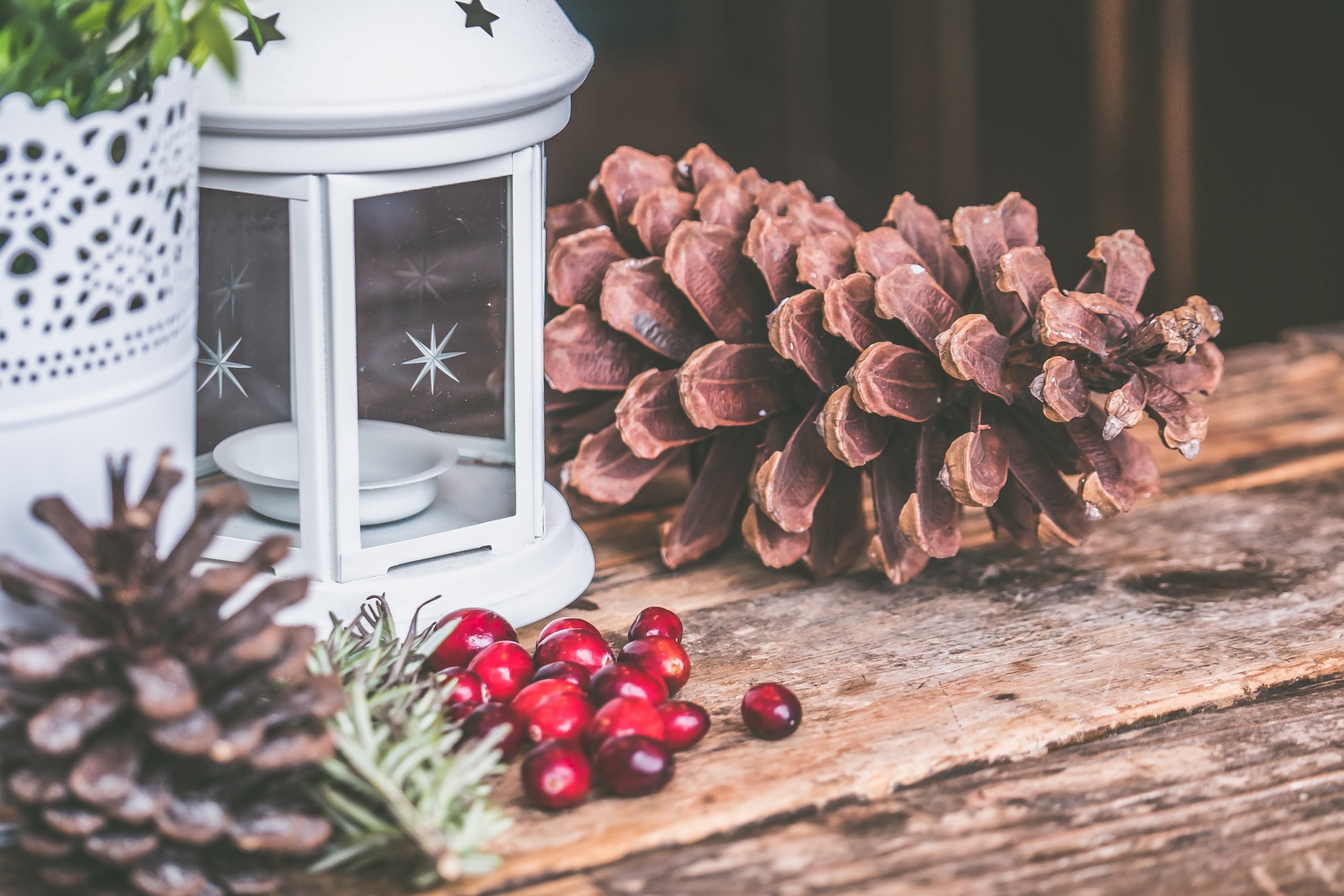










































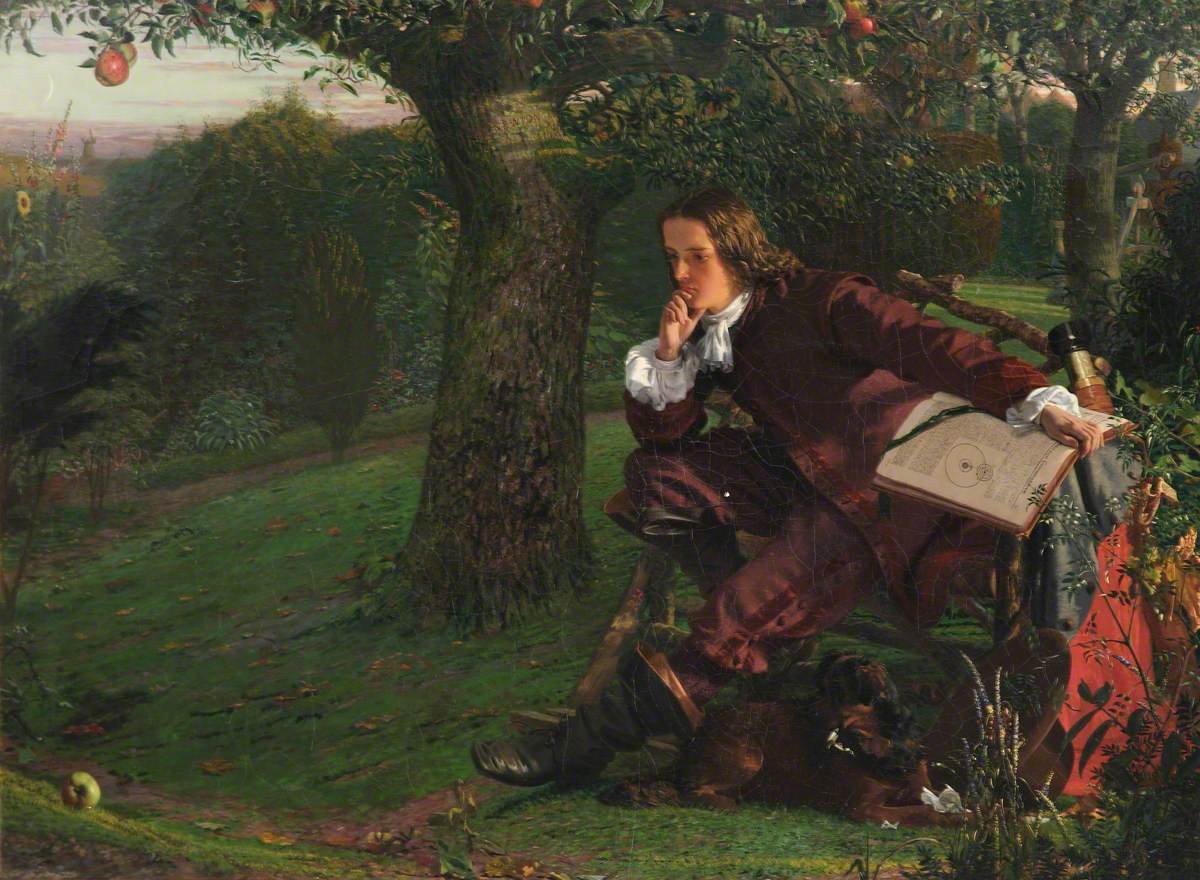



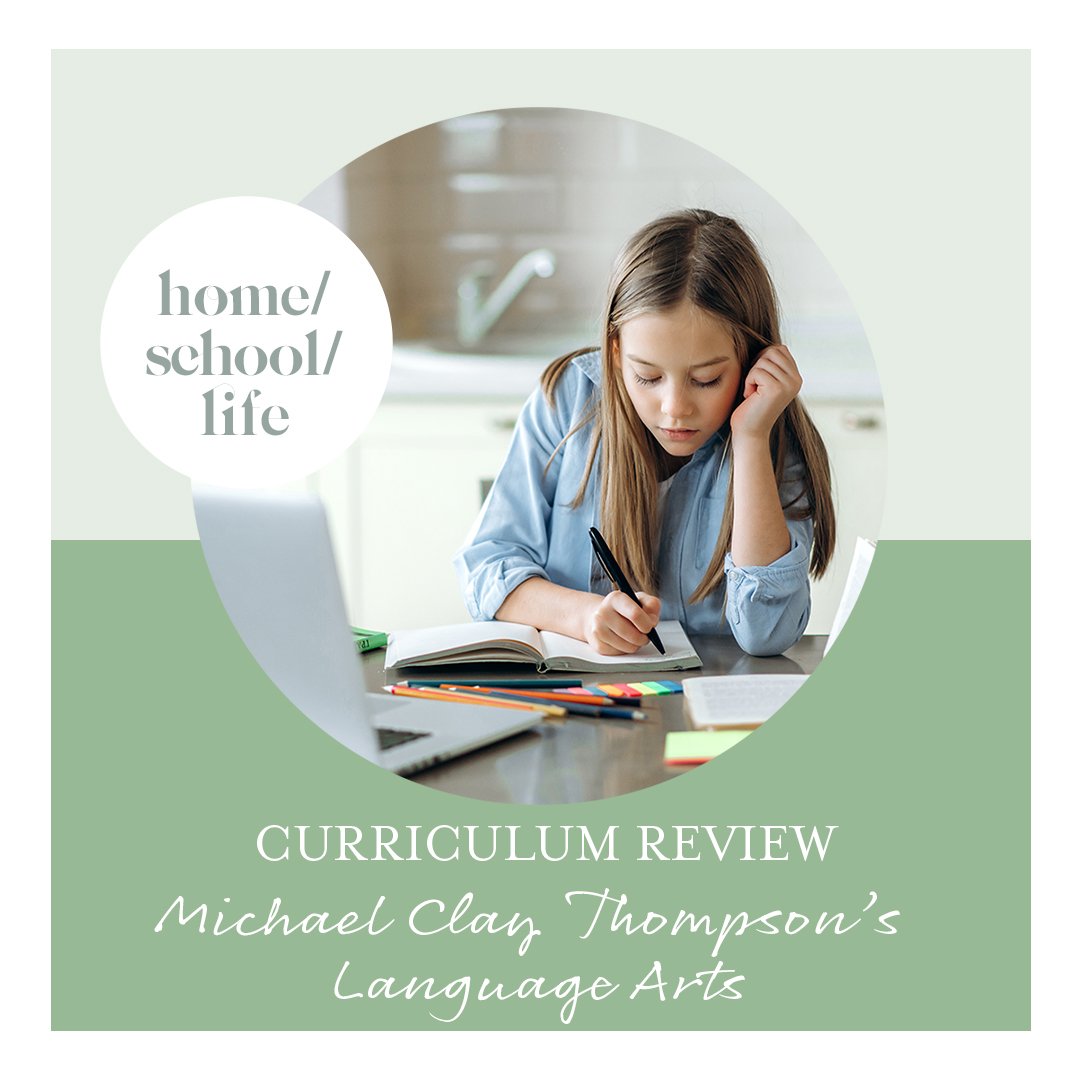
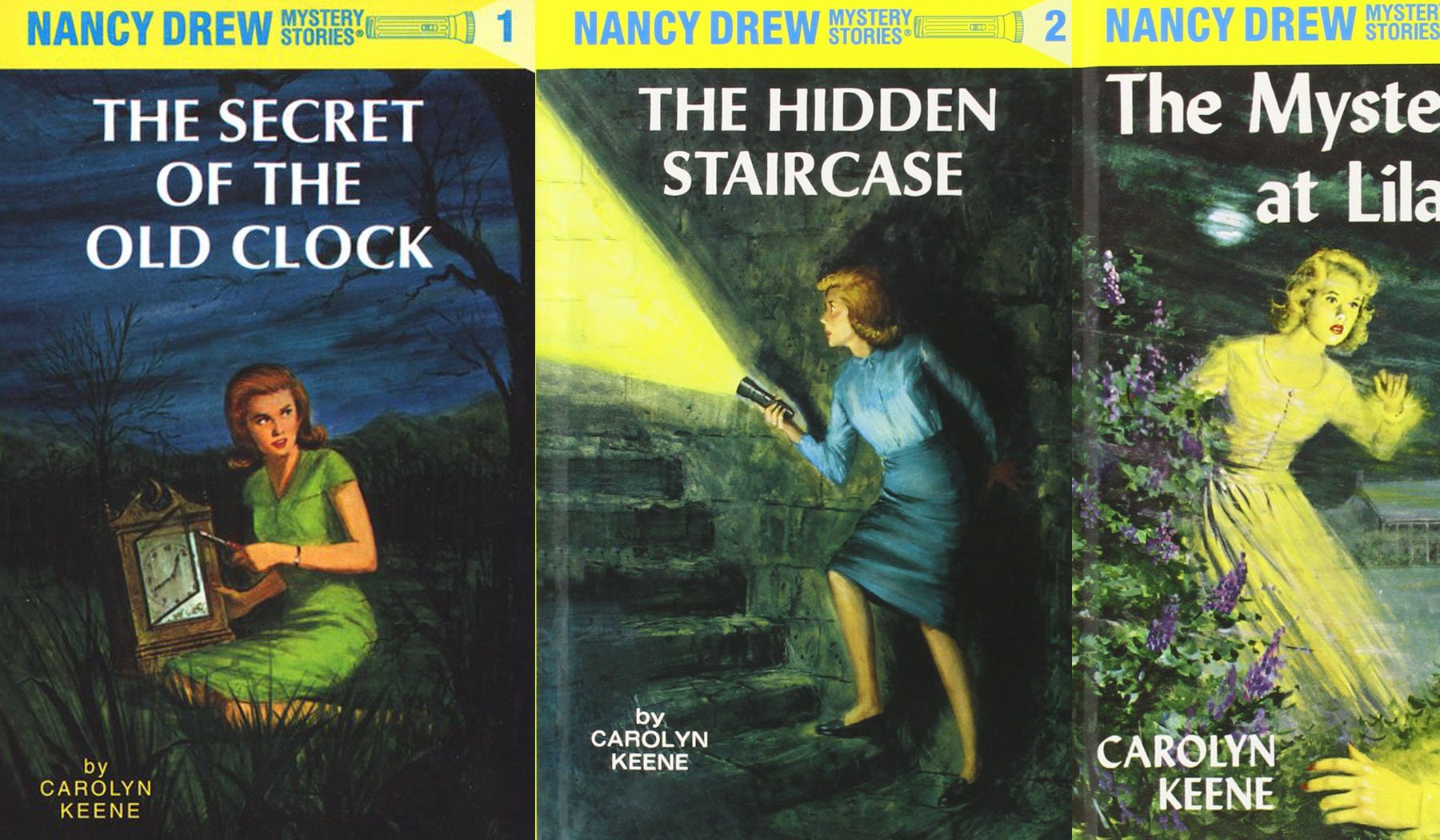





























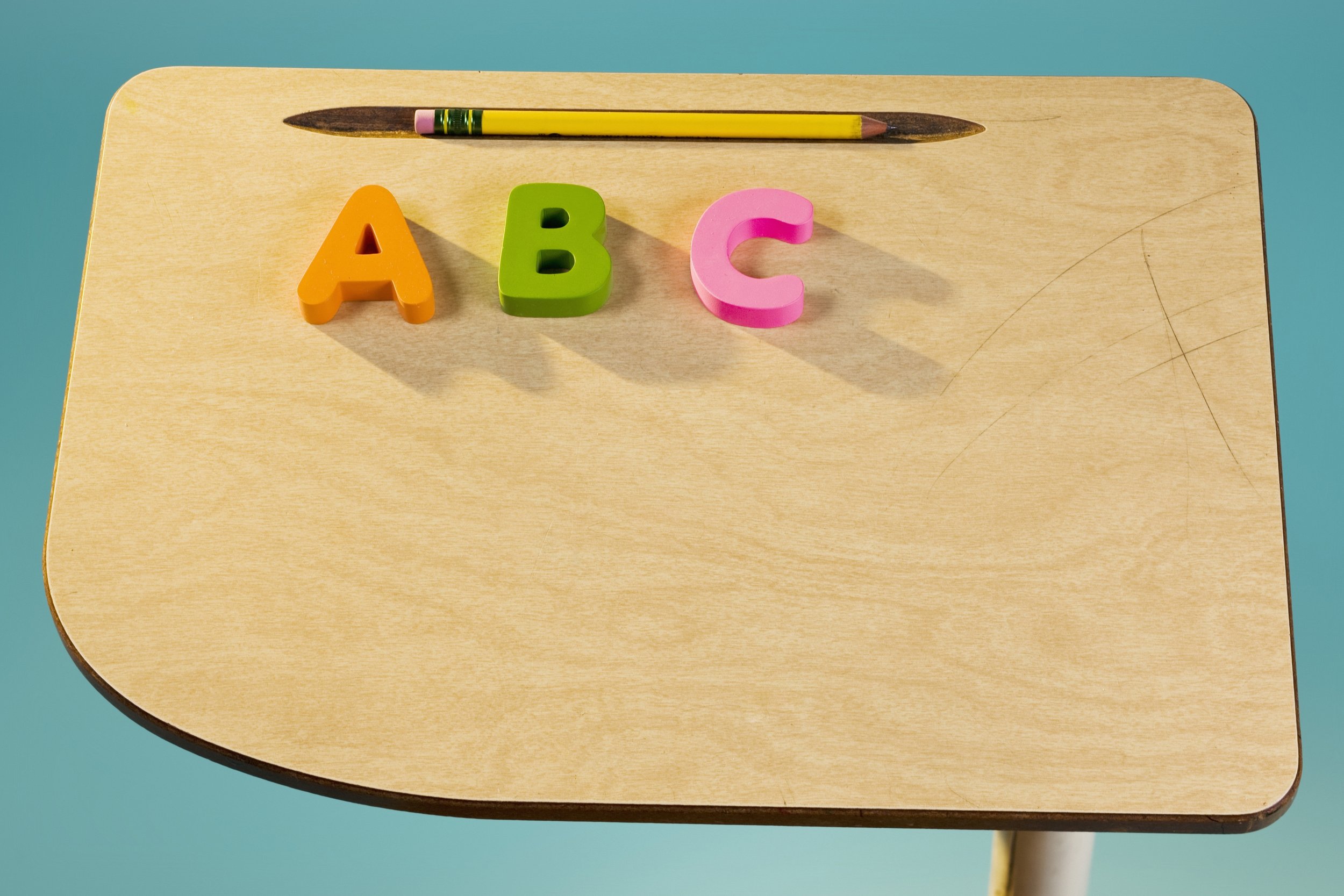





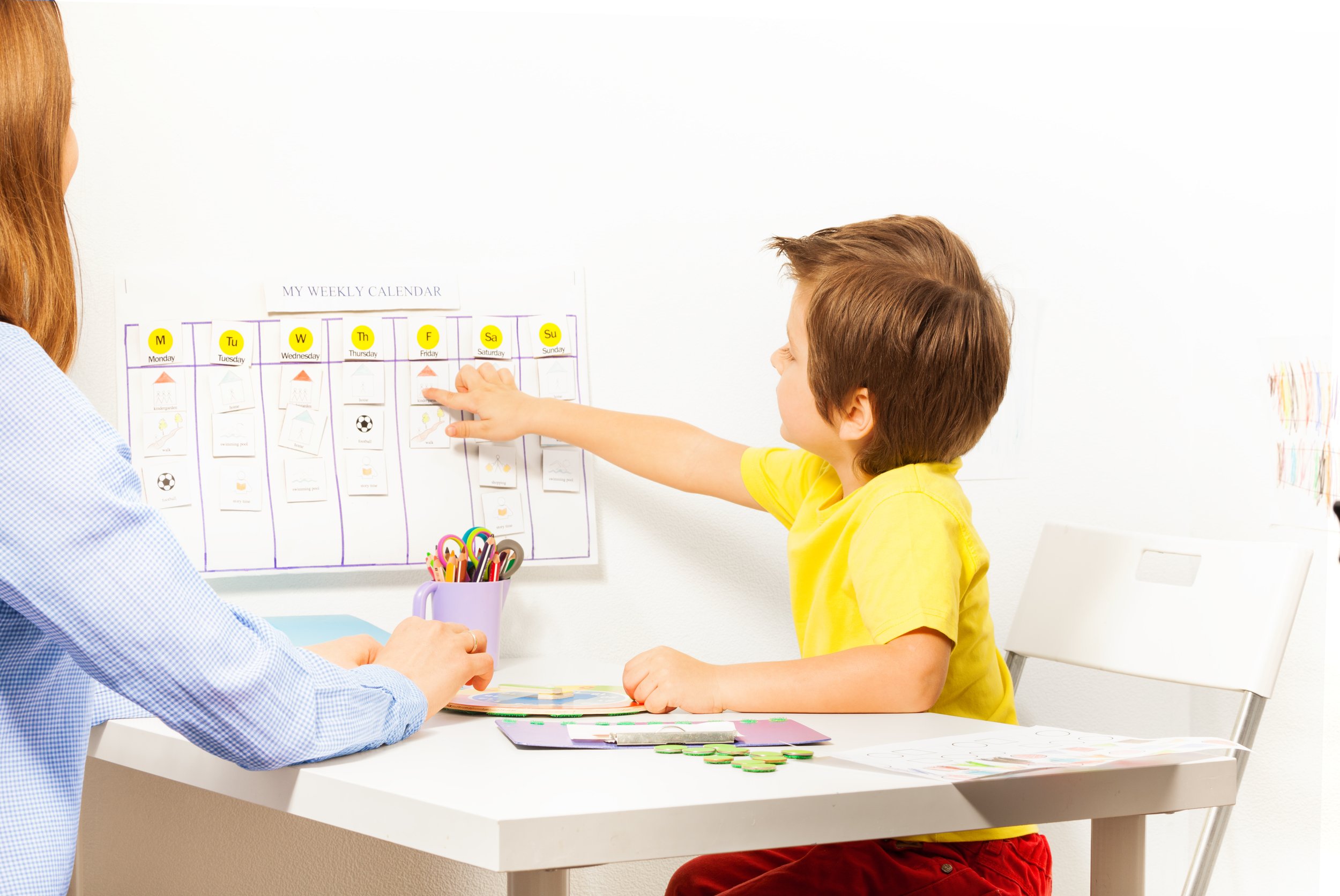






















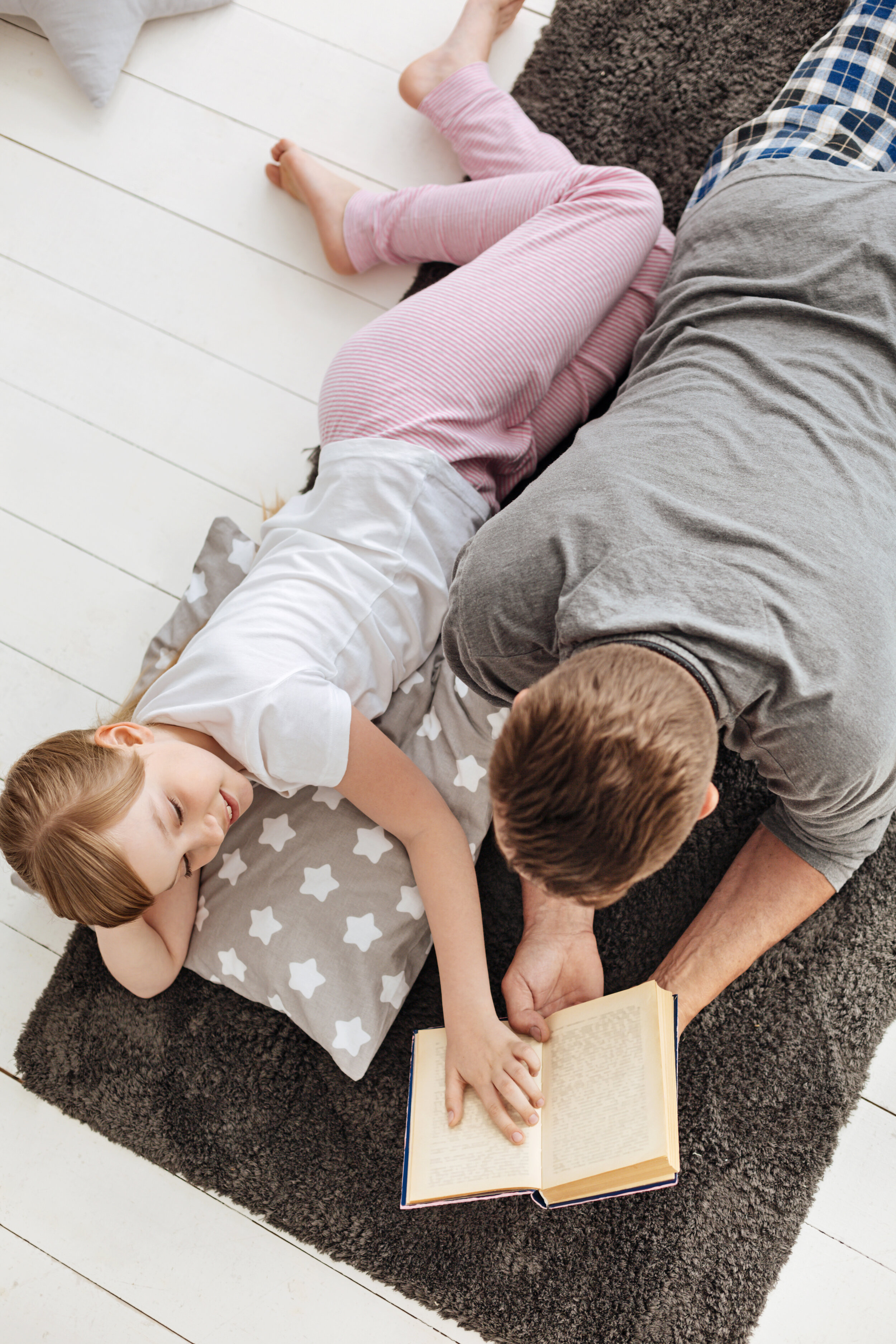









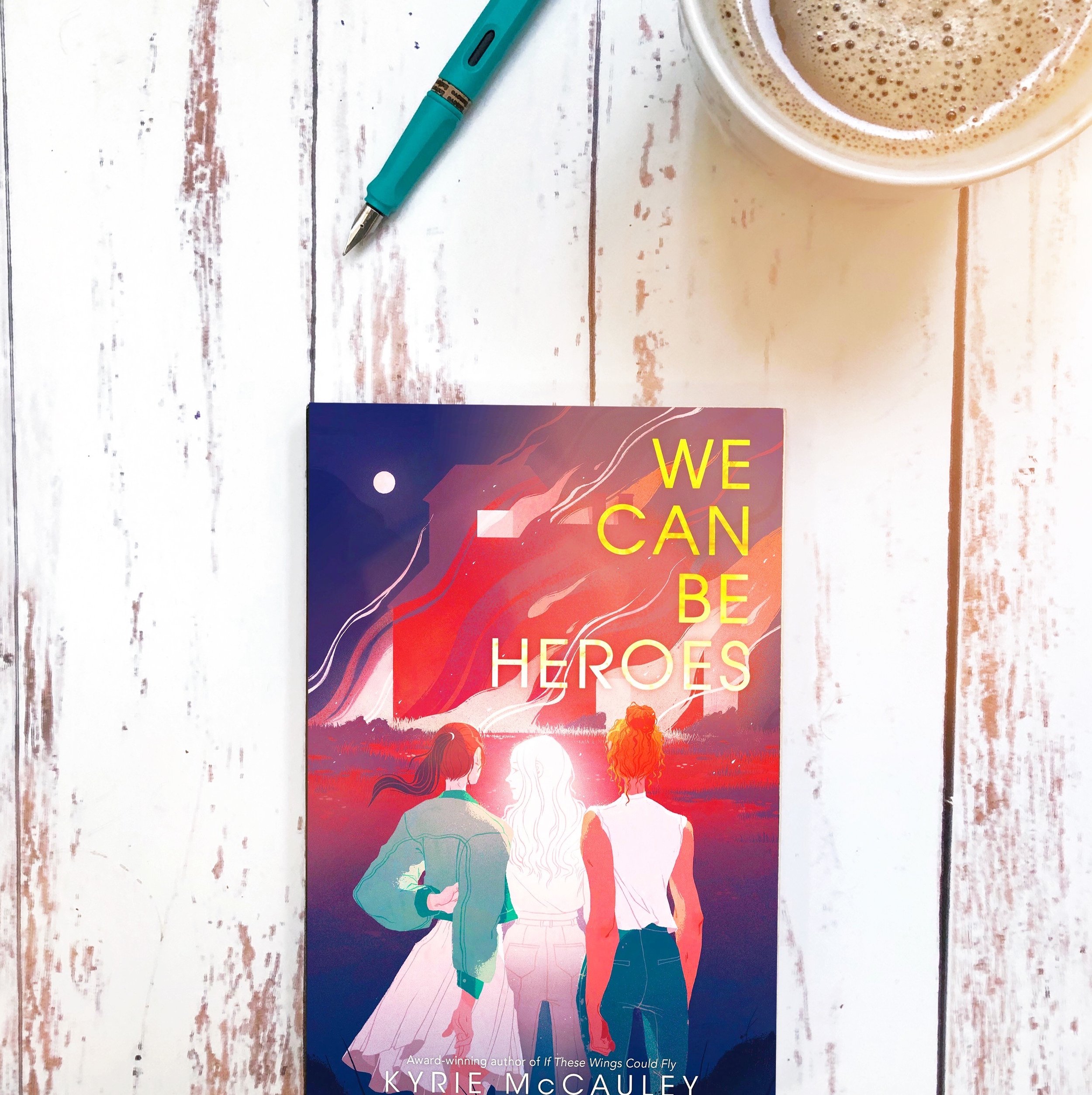























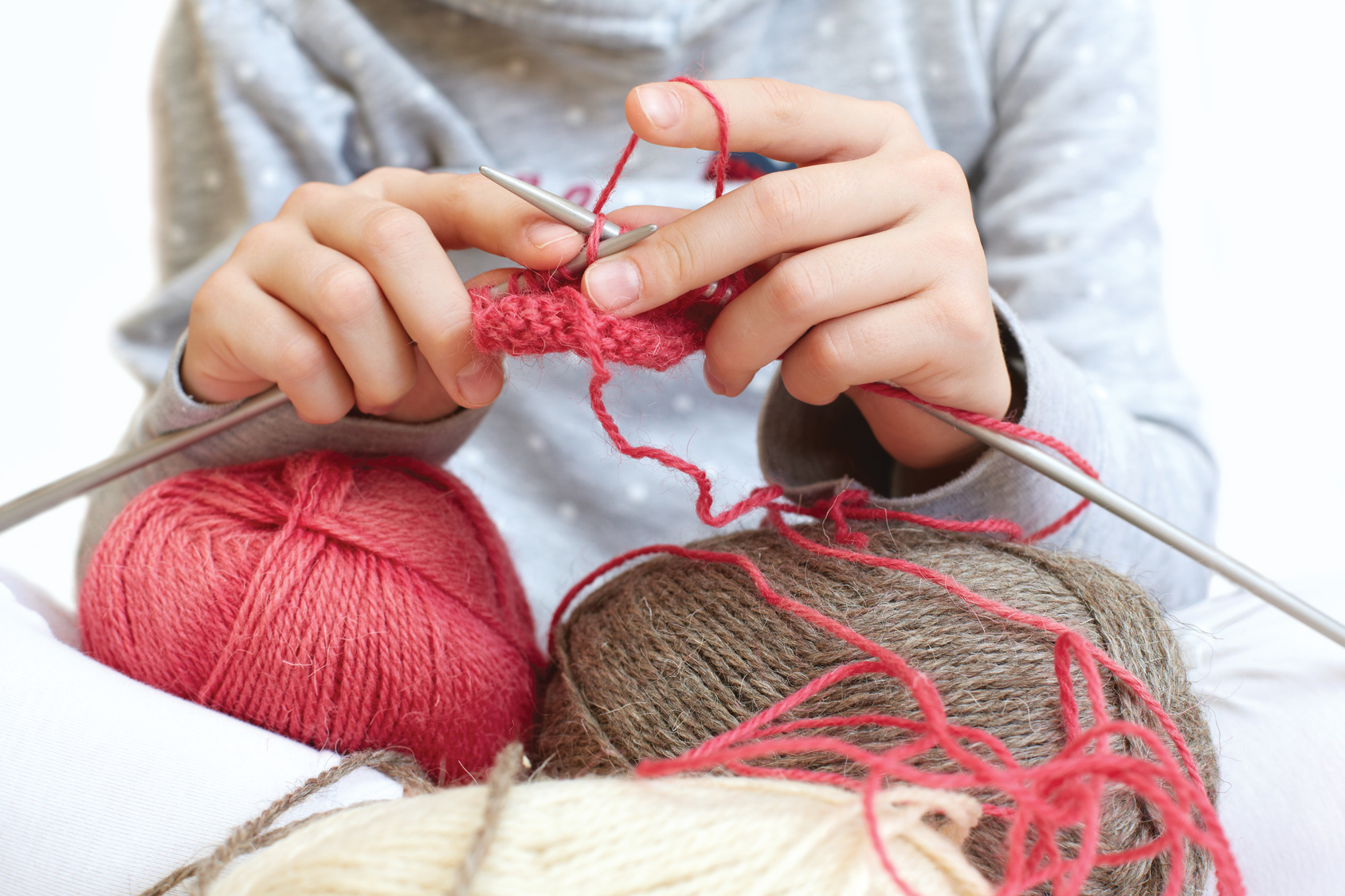





































SHELLI BOND PABIS is home | school | life magazine’s senior editor. She writes about her family’s homeschooling journey at www.mamaofletters.com.